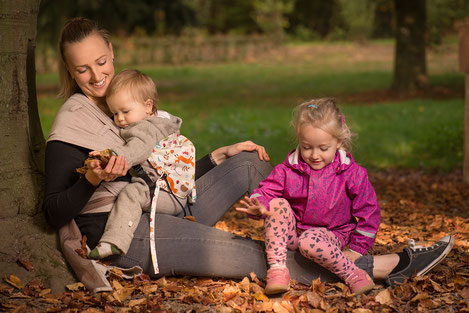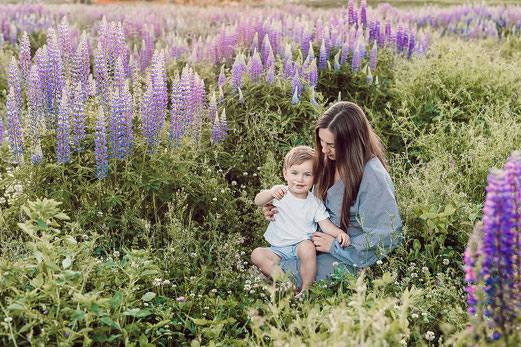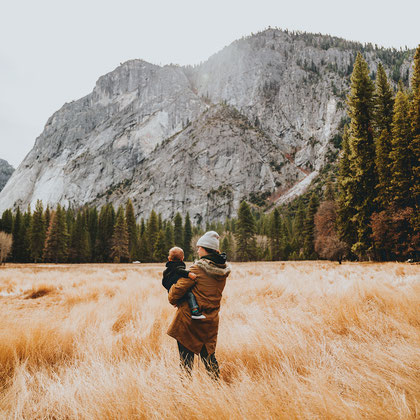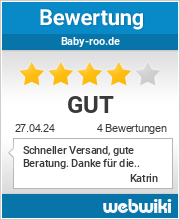- Huckepack exclusive carriers
- Huckepack custommade
- Huckepack wraps/slings
- Huckepack Full Buckle
- Huckepack Half Buckle
- Huckepack Wrap Tai
- Huckepack Mei Tai
- Huckepack Onbuhimo
- Huckepack Podaegi
- Hipbelt for Onbuhimo
- Pads for Hip Belt
- Contact
- Videos
- Babywearing Blog
- Babywearing on the hip
- Babywearing in the Winter
- My baby does not want to be in a carrier
- Which baby carrier is the best?
- Which baby carrier to choose for a newborn?
- Hiking with your baby
- Babywearing in the summer
- Carriers for kids
- Babywearing and the pelvic floor
- At which age to start back carring
- Babywearing during pregnancy
- Production
- Retailers
- Impressum
- AGB/disclaimer/data protection
Hiking with your baby - Tips for parents
At which age can I start hiking with my baby? What should I look for, when buying a baby carrier? What clothes do I put on my child and how do I plan the tour? In this blog post, we give many tips for parents, who would like to hike with their child.

When can I start to hike with my baby?
- You can already take longer walks with a newborn.
- It is important to pay attention to how fit you feel after birth and when you feel fine for the first longer walk with your baby.
Which baby carrier is suitable for hiking?
- For hiking, you can use a baby carrier or a wrap.
- You can wear your baby in front or on your back. If you carry your baby in front of the belly, the view of the trail may be limited.
-
From 4 months, it is a good time to carry
your child on your back. It can see more. Hiking with your child on your back is also beneficial for you, since you can see better the path.
- If you are using a baby carrier, make sure that the back panel is made from a wrap fabric.
- The back panel should have a bar reduction, panel shortening, and neck reduction to allow the panel to be adjusted continuously and grow with your baby for a long time.
- The bar should reach from knee to knee.
- Your child's buttom should be a bit deeper than the knees. The legs and buttom should form a M. This position is called the squat-spreading posture.
- A headrest supports your baby's head as it falls asleep in the carrier.
- For babies before the age of sitting, the back should be nicely rounded, with a Full Buckle, the straps should be attached to the waist belt.
- Your baby's airways must be free.
- The upper neck area should not be too wide, so that your baby's head does not tilt to the back or to the side.
- For hiking, a carrier with a hip belt is recommanded, as the weight is evenly distributed and not only on the shoulders.
- It is a matter of taste whether the baby carrier should have padded straps or expanded wide straps. A carrier should have been proven in everyday life before a long hike.
- When hiking a baby carrier gets dirty quickly. The carrier should therefore be able to be washed.
- A Kraxe can be used from the age of sitting. The advantage is that you can stow part of the luggage here. But the Kraxe also has many disadvantages. Your child is not sitting in the recommended squat-spreading posture and is not close to your body. As a result, your child's weight, including luggage, pulls on your shoulders and wearing it quickly becomes uncomfortable.

Which clothes should my child wear?
- Wool and silk clothes are the best. Cotton, on the other hand, absorbs a lot of moisture and only dries very slowly. The resulting evaporation cold can freeze your baby quickly and catch cold.
- Put as little clothing on your child as possible in the baby carrier, so that a good heat exchange can take place between you and your child.
- Keep your child's feet warm, e.g. with wool socks, fur shoes, babylegs.
- If it's still cold outside, you can put on your baby e.g. trousers, rompers, wool fleece, wool walk.
- In winter, a hat is important, because over the head a lot of heat is released and your baby can cool down quickly otherwise. In summer a cap with neck protection is recommended.
- In bad weather, your child should wear waterproofen rainwear.
- Do not dress your baby too warm.
More info about babywearing in summer you find here.
Tips for babywearing in winter you find here.

What should I consider when planning the hike?
- When your baby is small, it sleeps a lot in the baby carrier. Allow sufficient time for nursing breaks. The first hike should not be too long.
- As your baby gets older, it sleeps less. You should plan enough breaks for your baby to crawl or walk around.
- Toddlers want to walk alone. Plan here short distances and a lot of time, because your child will want to discover its surroundings, turn over every stone and watch every snail. A short hiking trail can quickly become a day trip.
- Take enough water and food with you.
- In summer, hiking trails through the forest have the advantage, that the trees are protecting you from direct sunlight and providing shade to your baby. In winter, the forest can protect you from the cold wind or rain.
- Choose hiking trails that you already know well.
- There are hikes up to max. 2000m height recommended. Slowly get your baby to higher regions, always making sure your baby is fine.
- Plan the hike, so that you do not have too much luggage with you. It is ideal if one carries the child and maybe a small backpack and the partner the remaining luggage. With a child in front of your stomach and a big, heavy backpack on your back, it gets exhausting.
- As a mother you should not overstrain yourself after the birth.

Safety, when hiking with a baby
- Choose hiking trails without steep passages. Just when you carry your baby in front of your belly, your vision may be limited.
- Firm and sure-footed shoes are a must.
- Hiking poles are recommended.
- Always take enough water with you.
- Make sure your baby is neither too hot nor too cold.
-
If your child
is a lot in the undergrowth and explores the surroundings, check for ticks in the evening.

What are your experiences for hiking with your child? Leave a comment with your tips and experiences.
Kommentare: 0



Inhalte von Powr.io werden aufgrund deiner aktuellen Cookie-Einstellungen nicht angezeigt. Klicke auf die Cookie-Richtlinie (Funktionell und Marketing), um den Cookie-Richtlinien von Powr.io zuzustimmen und den Inhalt anzusehen. Mehr dazu erfährst du in der Powr.io-Datenschutzerklärung.
Inhalte von Powr.io werden aufgrund deiner aktuellen Cookie-Einstellungen nicht angezeigt. Klicke auf die Cookie-Richtlinie (Funktionell und Marketing), um den Cookie-Richtlinien von Powr.io zuzustimmen und den Inhalt anzusehen. Mehr dazu erfährst du in der Powr.io-Datenschutzerklärung.



